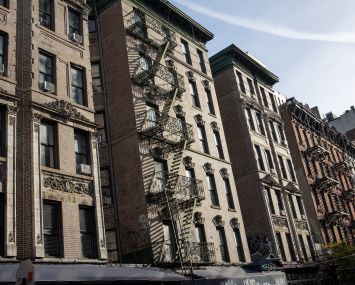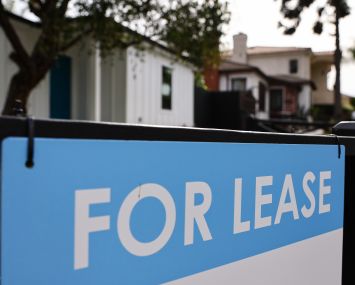The Urbanist: Building Congress President Richard T. Anderson on Construction Troubles
By Jotham Sederstrom February 14, 2011 10:22 pm
reprints
Only days before the streets of Cairo spilled over with anti-government protestors, Richard Anderson and his wife were nearing the tail end of a vacation in the Egyptian metropolis. With unrest already unspooling across Tunisia 800 miles to the west, the couple wondered aloud if something similar could happen in Egypt-and yet they resisted cutting their excursion short.
Instead, Mr. Anderson, president of the New York Building Congress since 1994, took note of the ancient city’s dilapidated infrastructure, from its aging buildings to its cracked bridges. They stayed for another three days.
“Cairo needs a lot of work and a lot of attention,” said Mr. Anderson, 70, as news of Hosni Mubarak’s resignation flashed across a screen behind him during an interview last week in his office on 28th Street. “It’s a fairly poor country with a significant population and lots of infrastructure needs. And they’re not maintaining their system in a state of good repair.”
With a passing resemblance to Alan Alda and at least a whiff of the actor’s signature idealism, Mr. Anderson has long championed the city construction industry through a different lens than his predecessors at the congress.
Mr. Anderson has for 17 years headed a 16,000-member nonprofit group that counts designers, architects, contractors, engineers and laborers as dues payers, and he’s done so by applying his own values. To be sure, he has brought a practical sense of optimism to an industry that has been reeling in economic despair since the collapse of Lehman Brothers in late 2008.
If you look at the numbers or listen to most experts, you’d surmise that new construction in the city has vanished to near extinction (see our story, “Building Expectations,” including statistical charts from the New York Building Congress). Indeed, with a mere 1.5 million square feet built across Manhattan last year, and spending down by 12 percent in 2010, the outlook can seem dire. Add to those dismal statistics the fact that construction employment is off by 16,000 workers from a 2008 peak, and the picture begins to look even worse. But in those same stats, Mr. Anderson sees a positive lining in the surge of institutional and public projects that have popped up in the city over the past few years, and he believes it will continue to increase during 2011.
Indeed, with capital spending in New York City reaching $9 billion last year, investment in public works accounted for 62 percent of the city budget. Add that to a big boost by the Metropolitan Transit Authority, which spent $2.6 billion, and the Port Authority of New York and New Jersey, which provided $2.1 billion in construction financing, and the picture looks a little rosier.
Still, Mr. Anderson believes a priority in the coming months will be securing the M.T.A.’s capital plan when the State Senate convenes. If it passes, the plan will represent an increase of $4.1 billion in city construction spending between this year and next, he said. “The construction industry is made up of sectors, and depending on which sector you look at, you have a different viewpoint,” Mr. Anderson said. “If you look at residential, which has fallen from over 30,000 units a year down to 6,000, then it’s incredibly slow-it’s a depression. And if you look at office buildings, it’s also pretty slow because there’s only the World Trade Center and maybe one or two other locations. But if you look at all the institutional and public work, it’s pretty strong.”
MR. ANDERSON was raised in Bay Ridge, Brooklyn, a neighborhood that, before transforming into an Italian, Irish and Middle-Eastern enclave, was a central hub for Norwegian and Swedish immigrants such as his own New York ancestors. As a boy, he and his family, including a father who owned a large construction company, moved to New Hyde Park, Long Island.
A graduate of Rutgers University who earned a degree in civil engineering, Mr. Anderson became swept up in the energy of the 1960s and soon turned his gaze to urban planning, which was gaining a degree of attention thanks to the actions of developers like Robert Moses and activists like Jane Jacobs. He later graduated with a master’s in regional planning at Cornell.
“The ’60s were a vibrant time, and I wanted to be socially relevant, and I thought that urban planning was more relevant than civil engineering,” said Mr. Anderson, who added, “I was reading The Death and Life and The Power Broker and things like that.”
Shortly after graduating from Cornell, the idealistic Mr. Anderson accepted a position at the Regional Plan Association, a nonprofit focused on intelligent planning throughout the tristate area. As president of the group, Mr. Anderson helped influence some of the decisions being made by the City Planning Department in the 1980s and ’90s. In 1993, Mr. Anderson, the lifelong New Yorker, accepted a job running a Texas group called the Dallas Plan. While commuting between New York and Dallas, Mr. Anderson worked with the city council there for two years, guiding capital improvement plans.
Despite the accomplishments that Mr. Anderson helped to achieve over two years working with Dallas, he maintains that, despite its problems, the urban planning process in New York is a far more efficient process in the long run.
“It didn’t take them at all as long to do things,” said Mr. Anderson, who left the job in 1994 to take the reins of the New York Building Congress. “Things are much less time-consuming, and yet because they did things with fewer decision makers, they made more mistakes. We don’t tend to make as many mistakes because it takes such a torturously long time to do things.”
jsederstrom@observer.com


